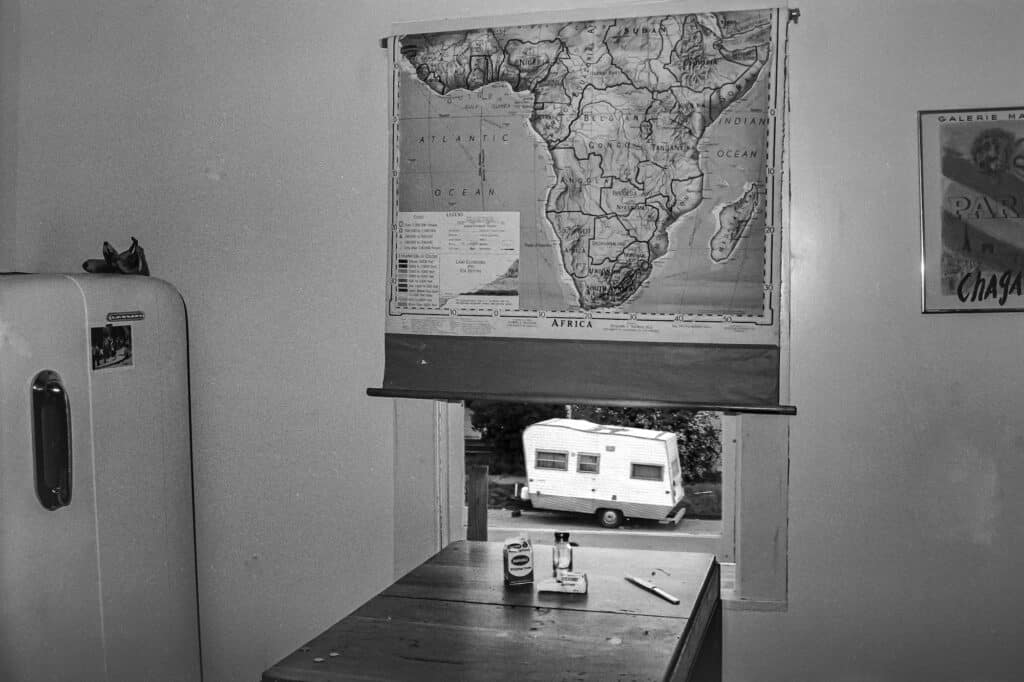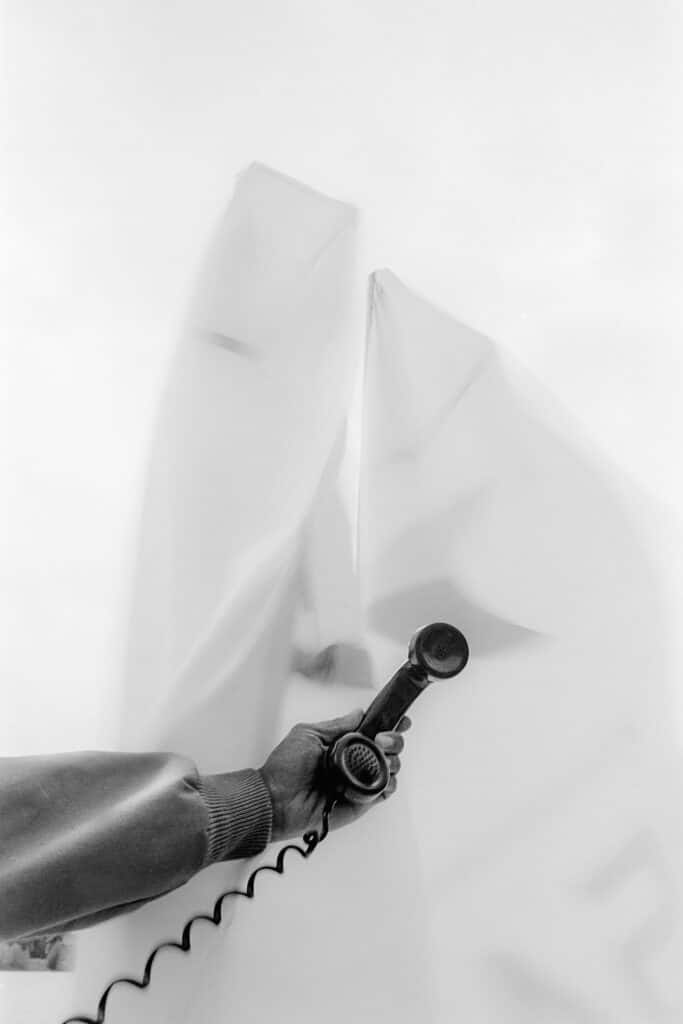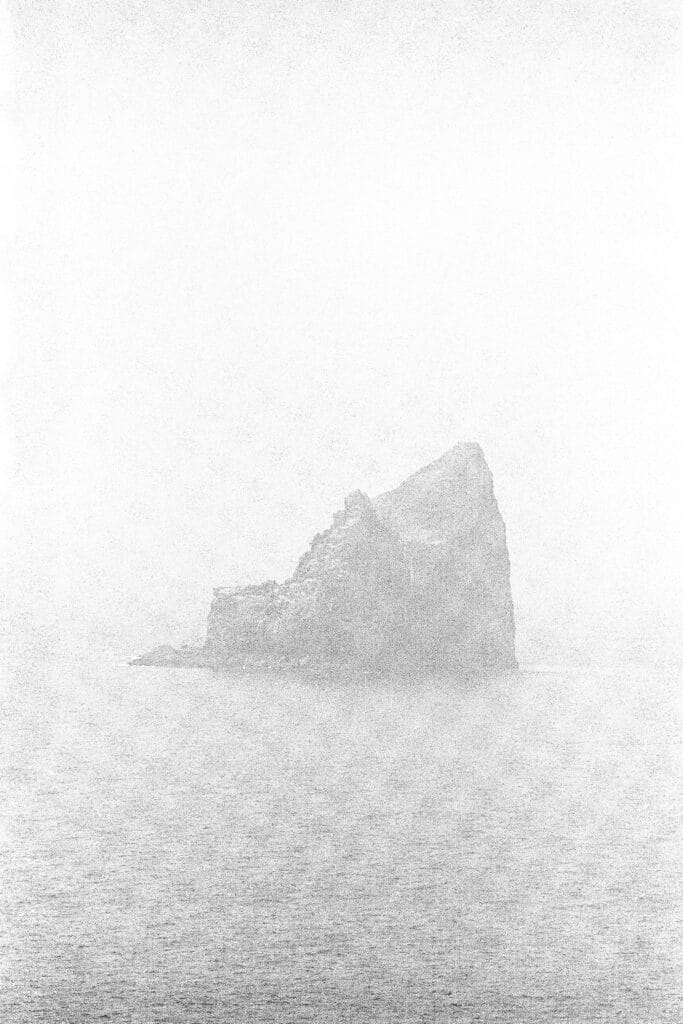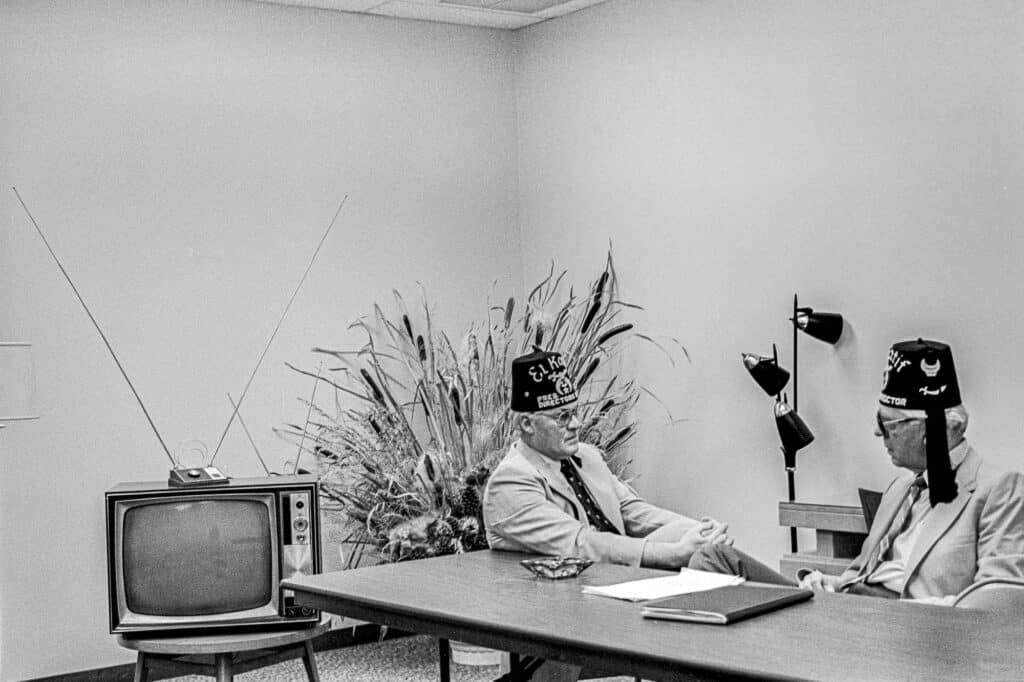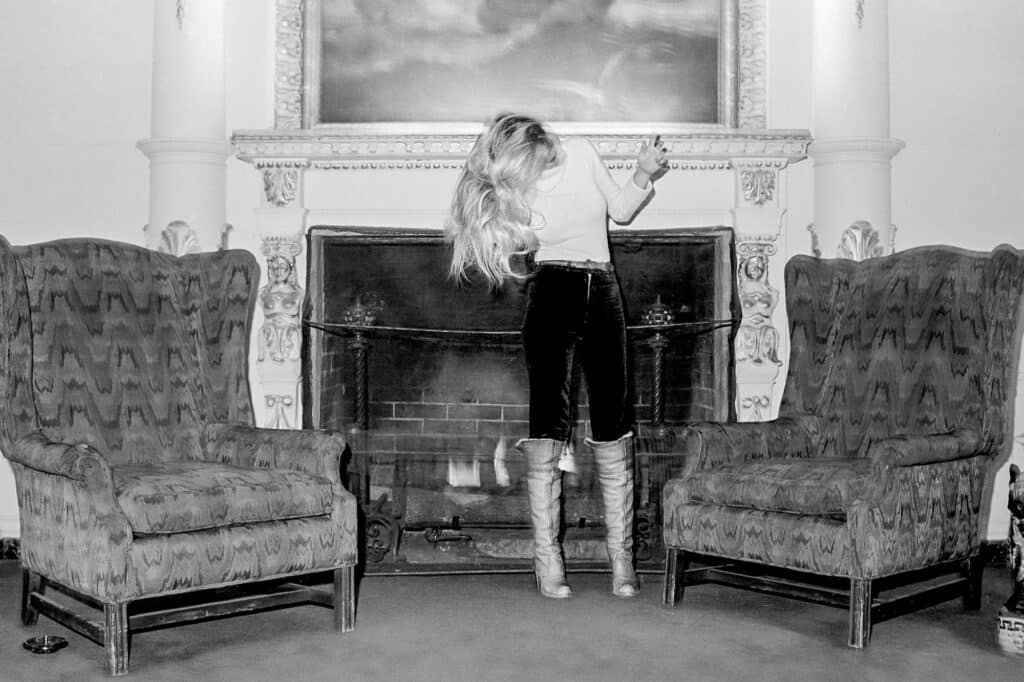“Northwest Passage,” the title of this series, refers to both geographic location and my passage into adulthood. It is a loose collection of my early images created in the Pacific Northwest, notably Idaho, Washington, Oregon, and Northern California. Some of the pictures came from serving briefly as a university staff photographer. Some came about from my brief time working on assignments for small newspapers. But most of these images were taken for the hell of it, with no pre-conceived or self-conscious sense of adhering to any singular theme. It’s a random if not sloppy collection. But these images are all connected, because the same young man volunteered the use of his right index finger to press the shutter release in these places, and at these people.
I was influenced early on by Annie Leibovitz, Robert Frank, and Ralph Gibson’s books The Somnambulist and Deja-vu. I could feel them if I couldn’t clearly define them. I couldn’t stop looking at them. I imagined what was happening, not within the image, but outside the frame. I like pictures that I don’t understand. I like mystery, I guess.
At 18, I enrolled at the University of Idaho, in small town Moscow. I was a photography major, and eventually earned my MFA there. This is where this series begins. We were entering the era of punk and new wave, and my college buddies and I thought of ourselves as punks and misfits; brilliant and misunderstood. Our soundtrack was the Sex Pistols, Modern Lovers, and The Residents. I always had a camera on me, it seems. After graduation, I continued to visit and photograph my college friends in their new lives in Portland, Seattle, and elsewhere in the Northwest.
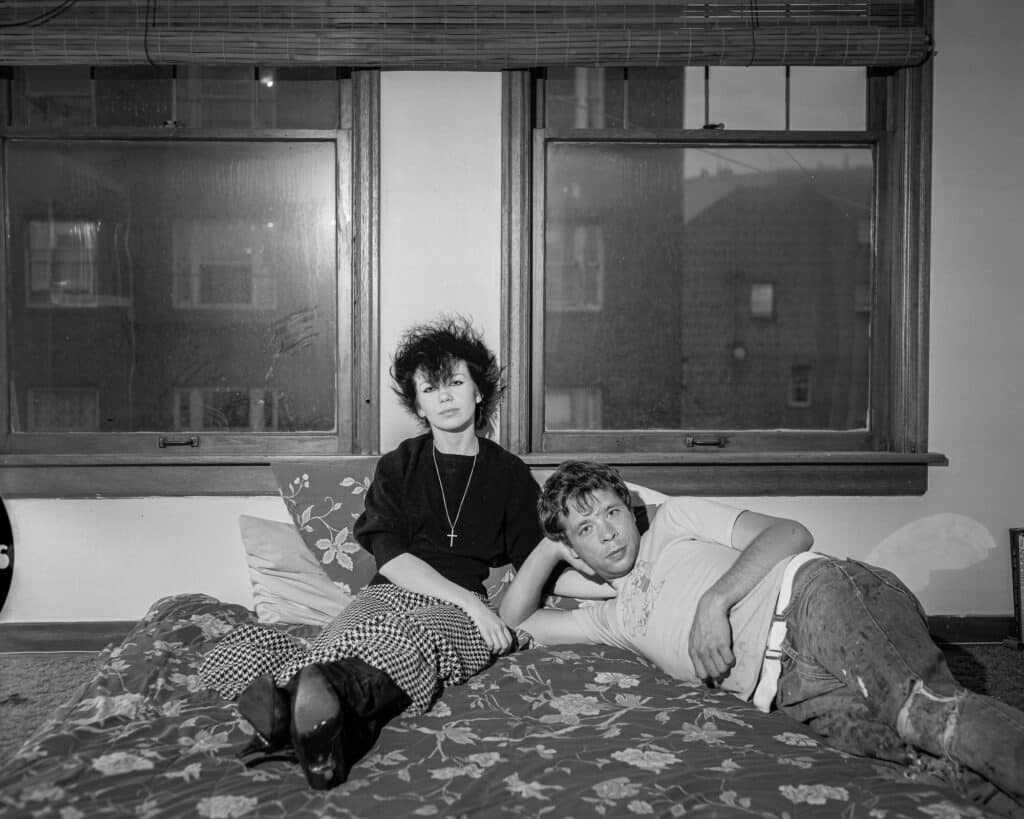
I recently returned to my aging negatives from my youth. I saw them as new again, and perhaps worth thinking of them in the manner that they should be, as loose intuitive journal entries from a decade of my life. I scanned many images taken from the mid-1970s to mid-1980s. Equipped with an ornery but excellent Imacon film scanner, I spent months slowly scanning away, whenever I could steal a few moments away from my job as a college photography manager and teacher.
I worked at a small weekly newspaper in Spokane, in eastern Washington State, from late December of 1980 and worked for about two months, when the paper abruptly shut down. Assignment photography can be wonderful because it takes you to places you would ordinarily not see. When Playboy’s Miss March 1981 Kym Herron came to town, we knew it wasn’t really what our paper was about, but the writer and I wanted to meet a real centerfold lady. Miss March Playing with Her Hair.
A story on a nearby state operated facility took me into the interior spaces of the developmentally disabled. Bedroom, Lakeland Village. I photographed various Spokane fraternal organizations, where I found a quirky couple of men in a windowless room. Shriners at The Office, Rape Defense Center speaks for itself. Other assignment work brought me Jr. Miss Rehearses, and Cheerleader Camp, both taken in Moscow Idaho, 1979.
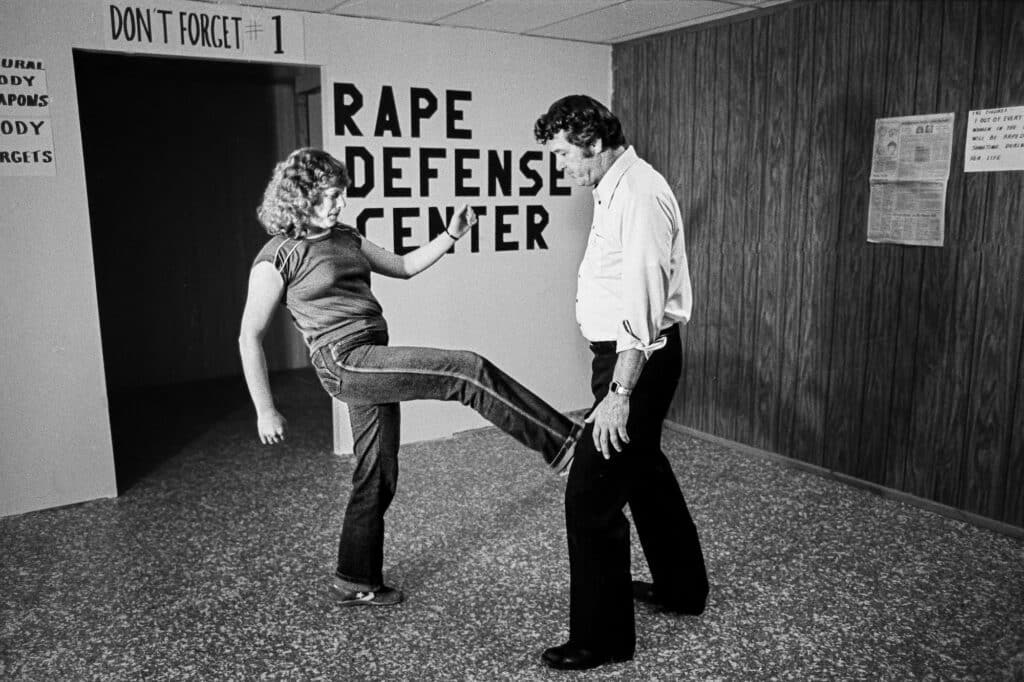
I have focused on portraiture throughout my career. Clarke, on a Frequent Smoke Break was photographed in 1978 in his new apartment in Moscow, Idaho, which he was prepping so he and his girlfriend Rosemary could move in. They were close friends of mine and I photographed them often. Rosemary With Bouquet was photographed in 1985 at her new home in Portland.
I was living in the Bay Area and along with my wife Monique (Monique on a Train,) we traveled by Amtrack north so that I could interview for a college position in Olympia, WA. I got the job and stayed there for 33 years. By this time, I was using a hand-held 4×5 press camera with on-camera flash, searching for an almost forensic clarity as often revealed in press and PR photography of the mid-century. This is also evident in my portrait of Clarke with his new girlfriend from this trip, Leah and Clarke, Seattle, 1985.
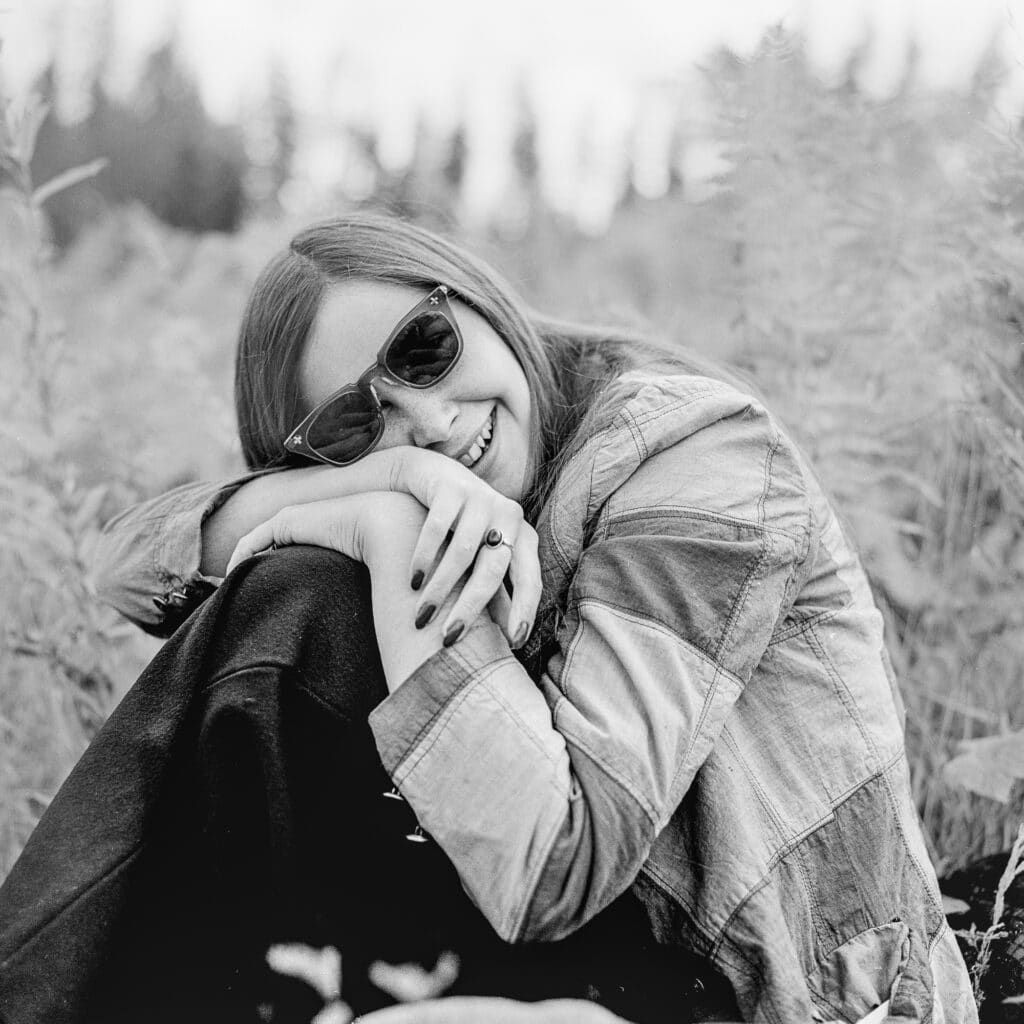
I photographed roommates, punk rockers, dancers, singers, smokers, and naked ladies. And parties. Lots of parties. Tony got himself all dolled up for Happy Birthday America, 1981. An infra-red A Crown of Naked Ladies for the King, 1980 and Butts and Beer 1981 were both taken at wildly popular “Punk Night” in Moscow’s local college disco. (We all agreed “disco sucks,” so punk night was the only night for us.) Moscow annually hosts a black and white themed Mardi Parade and Ball. Pride in America and Mardi Gras Night in Moscow, from the early 1980’s are candid glimpses into this event. It was all so much fun.
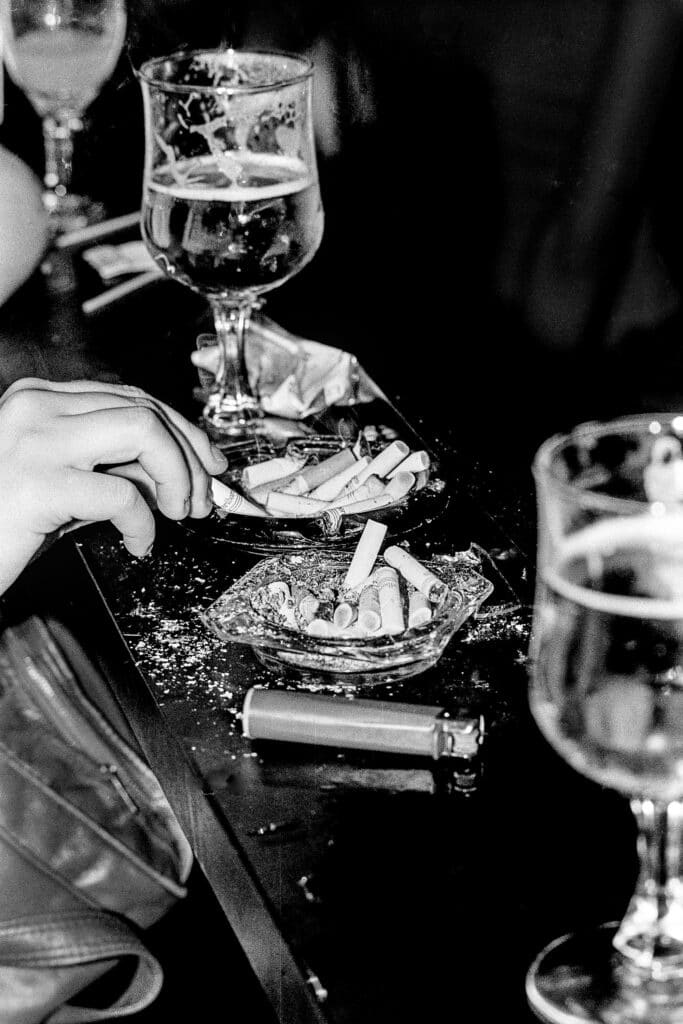
On occasion I’d stumble onto grimmer realities. On an aimless drive a few miles from Moscow, Idaho, I discovered an apparent suicide victim, and was asked by the state patrol to photograph her for evidence. Drowning on the Palouse River, 1978. It was the first dead body I’d ever seen. I kept my eye on the officer, fearing to gaze at the lifeless body. While working in Spokane, a small commercial airliner crashed in the hills, just minutes from our newspaper office. Bodies were burned beyond recognition. An officer yelled at me for stepping on the evidence. I was shaken up, but lacked the sensitivity found in the fireman’s face; Plane Crash, 1981.
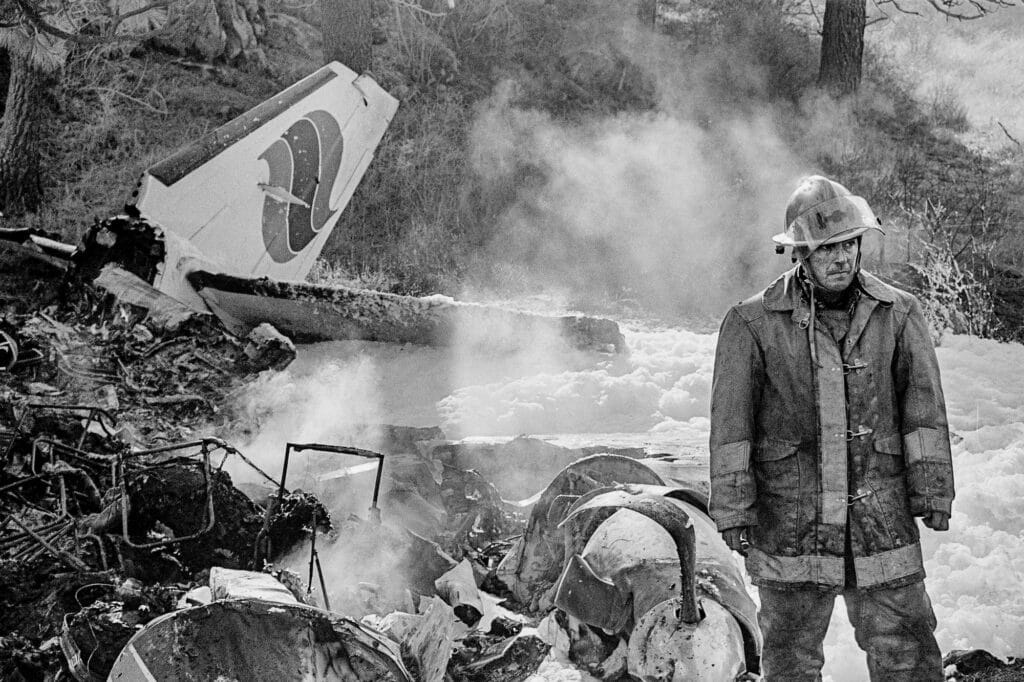
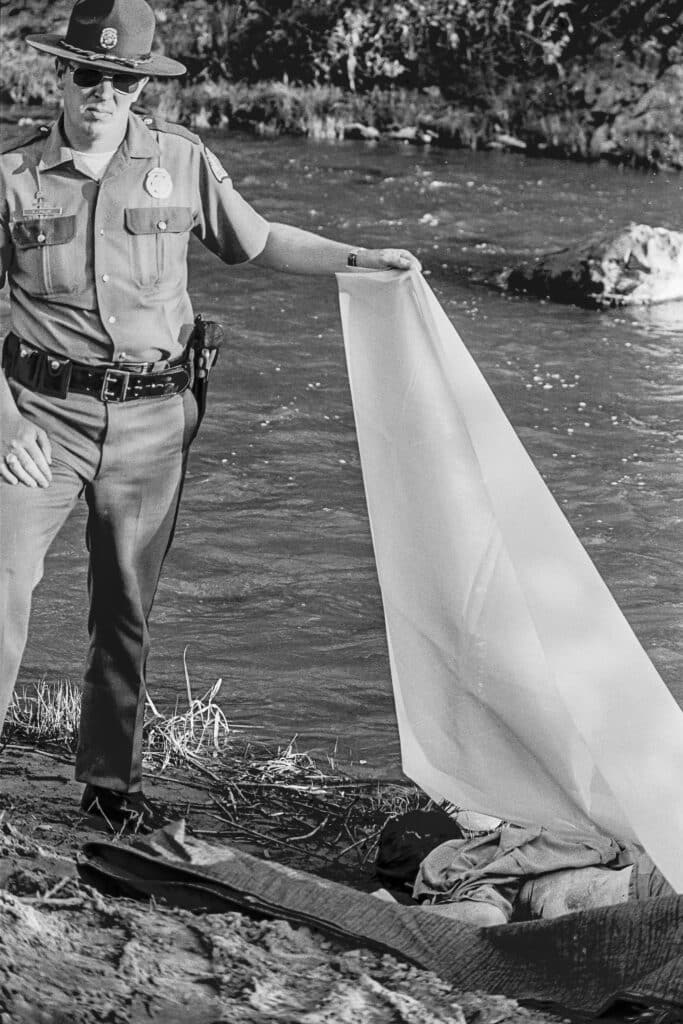
This work is rooted in places and faces of a generation past–fragments torn from a diary, my diary. It all looks different to me now. At times over the years, I’ve been afraid to consider these images as anything but pretentious attempts of an art photography student. Now, they appear to be innocent documents of people and other curiosities of these decades.
After 50 years of making photographs, I seem to have come full circle. I realize that I still like pictures that I don’t understand. Not every image needs to be understood, contextualized, or decided upon. Some just need to be intuitively felt. When I see a photograph that I fully understand or get, I tend to lose interest. I want to be jabbed by the feeling of an image, in what Roland Barthes referred to as punctum.
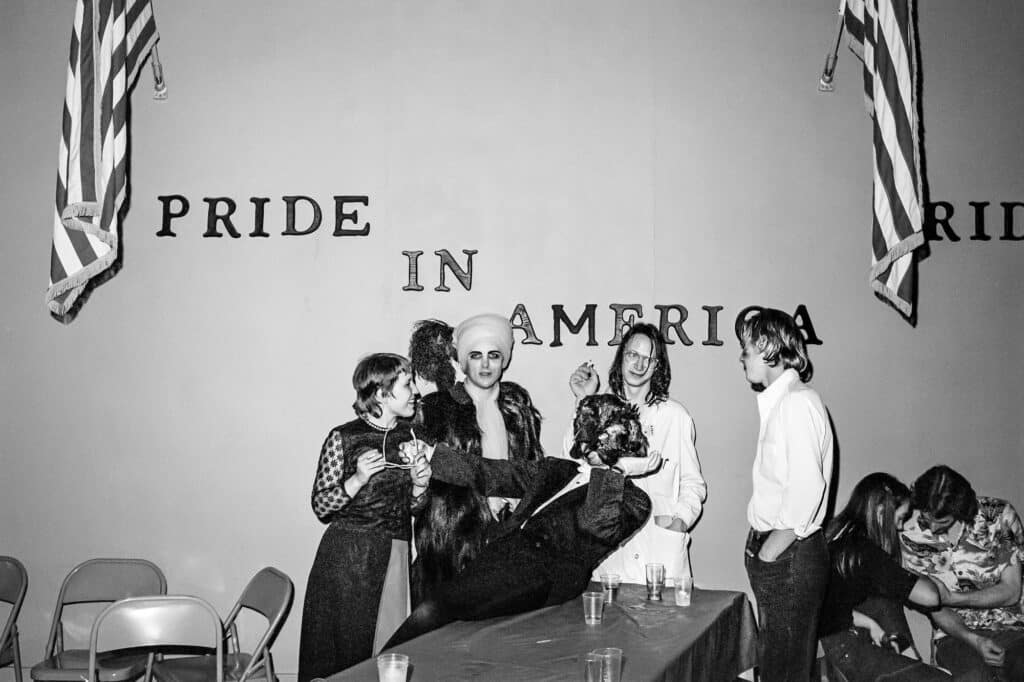
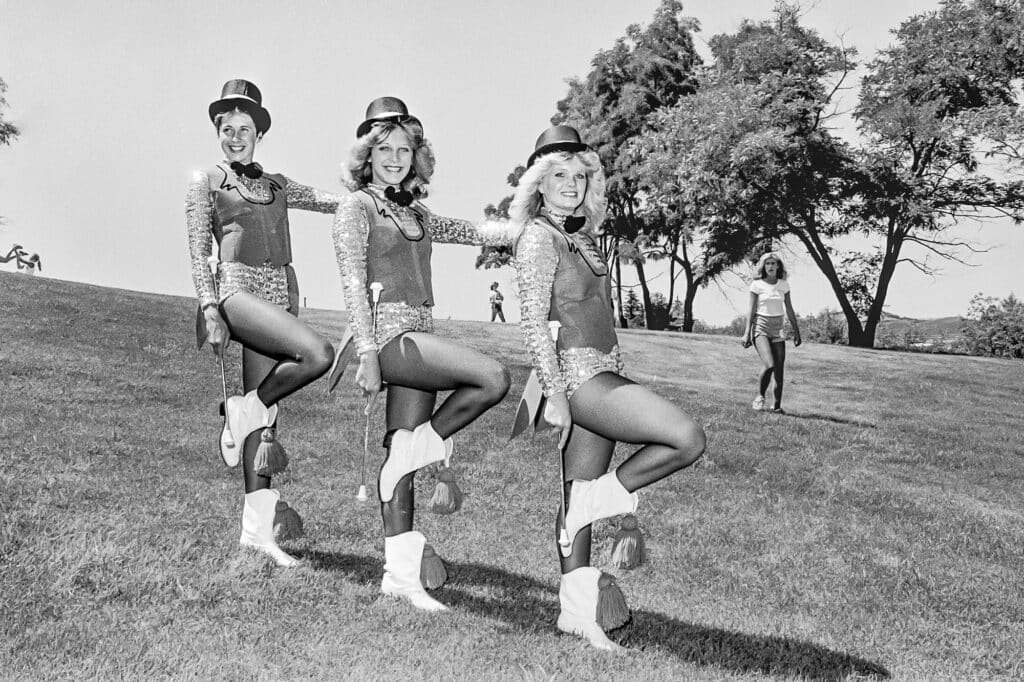
Time changes everything, and certainly changes how one sees a photograph. Cameras record light, but they are also little time machines. I look at these images, and they prompt me to recall every moment in which they were created. At the same time, they feel foreign to me, like they were taken by somebody else. Like newly discovered mysteries in a dusty rear bin in a junk store.
More information on Steve Davis on his website.
